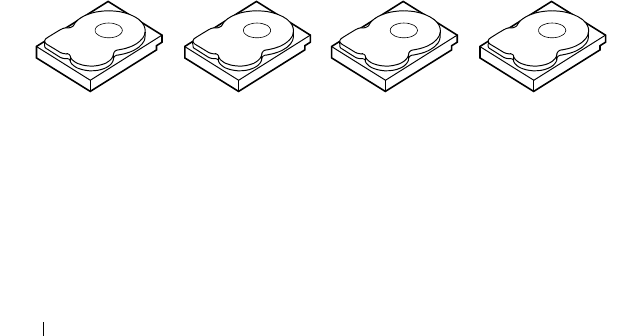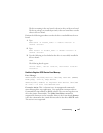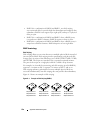
130 Appendix: RAID Description
• RAID 10 is a combination of RAID 0 and RAID 1, uses disk striping
across mirrored disks. It provides high data throughput and complete data
redundancy. RAID 10 can support up to eight spans, and up to 32 physical
disks per span.
• RAID 50 is a combination of RAID 0 and RAID 5 where a RAID 0 array
is striped across RAID 5 elements. RAID 50 requires at least six disks.
• RAID 60 is a combination of RAID 0 and RAID 6 where a RAID 0 array is
striped across RAID 6 elements. RAID 60 requires at least eight disks.
RAID Terminology
Disk Striping
Disk striping allows you to write data across multiple physical disks instead of
just one physical disk. Disk striping involves partitioning each physical disk
storage space in stripes of the following sizes: 64 KB, 128 KB, 256 KB, 512 KB,
and 1024 KB. The stripes are interleaved in a repeated sequential manner.
The part of the stripe on a single physical disk is called a stripe element.
For example, in a four-disk system using only disk striping (used in RAID 0),
segment 1 is written to disk 1, segment 2 is written to disk 2, and so on.
Disk striping enhances performance because multiple physical disks are
accessed simultaneously, but disk striping does not provide data redundancy.
Figure A-1 shows an example of disk striping.
Figure A-1. Example of Disk Striping (RAID 0)
Stripe element 1
Stripe element 5
Stripe element 9
Stripe element 2
Stripe element 6
Stripe element 10
Stripe element 3
Stripe element 7
Stripe element 11
Stripe element 4
Stripe element 8
Stripe element 12


















